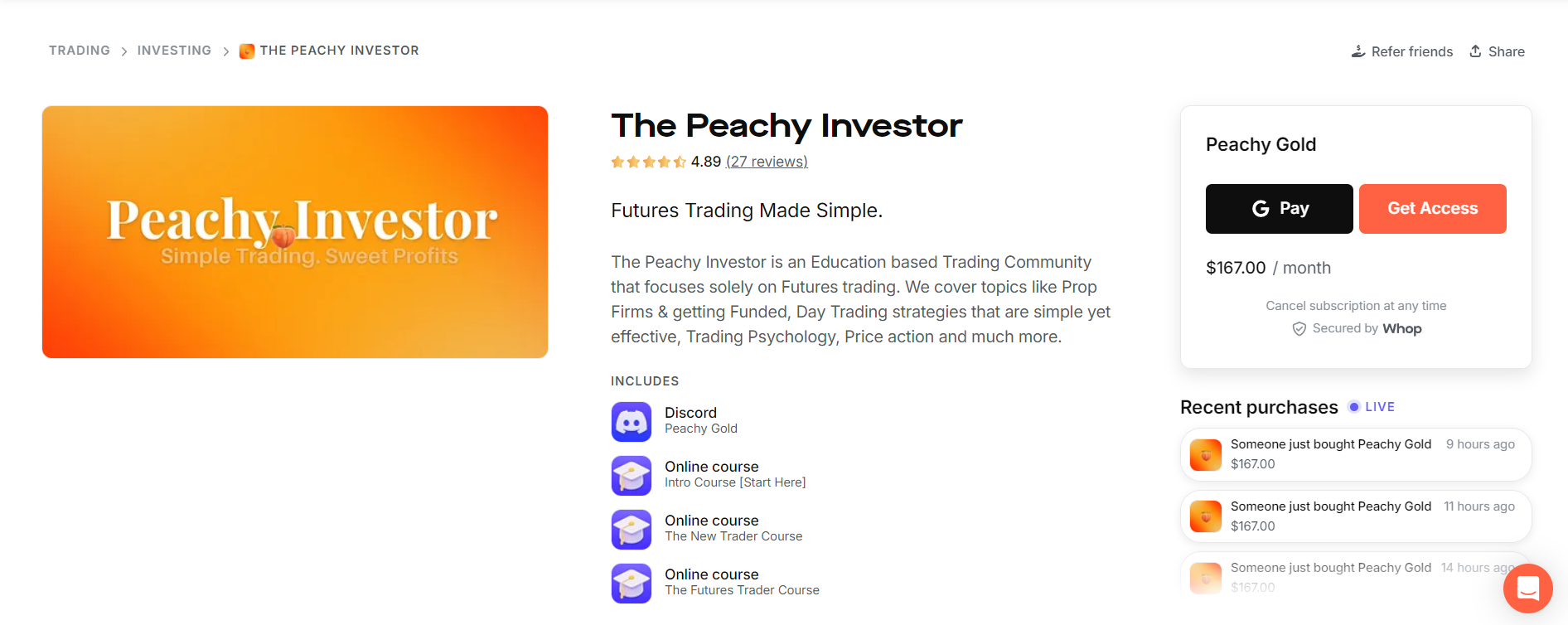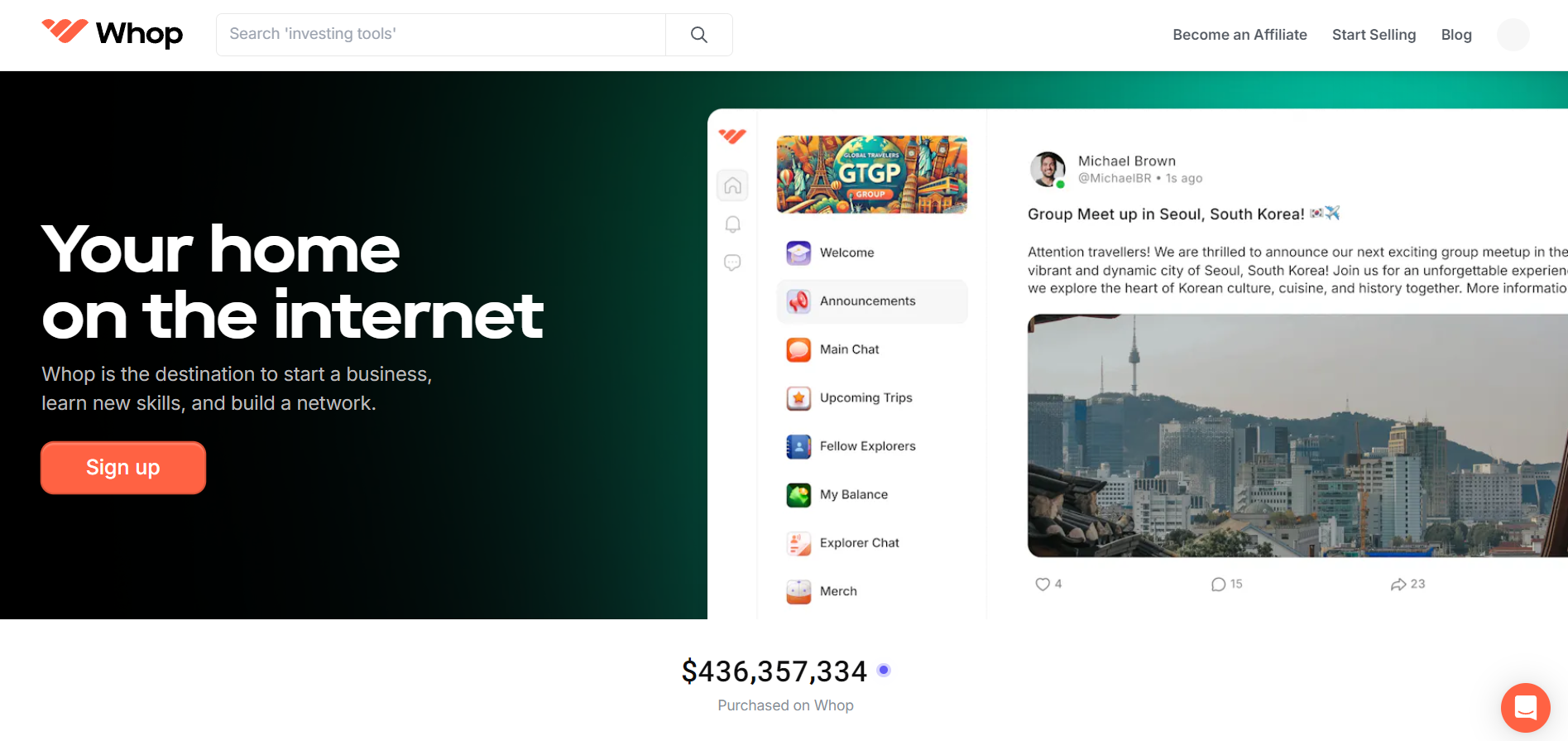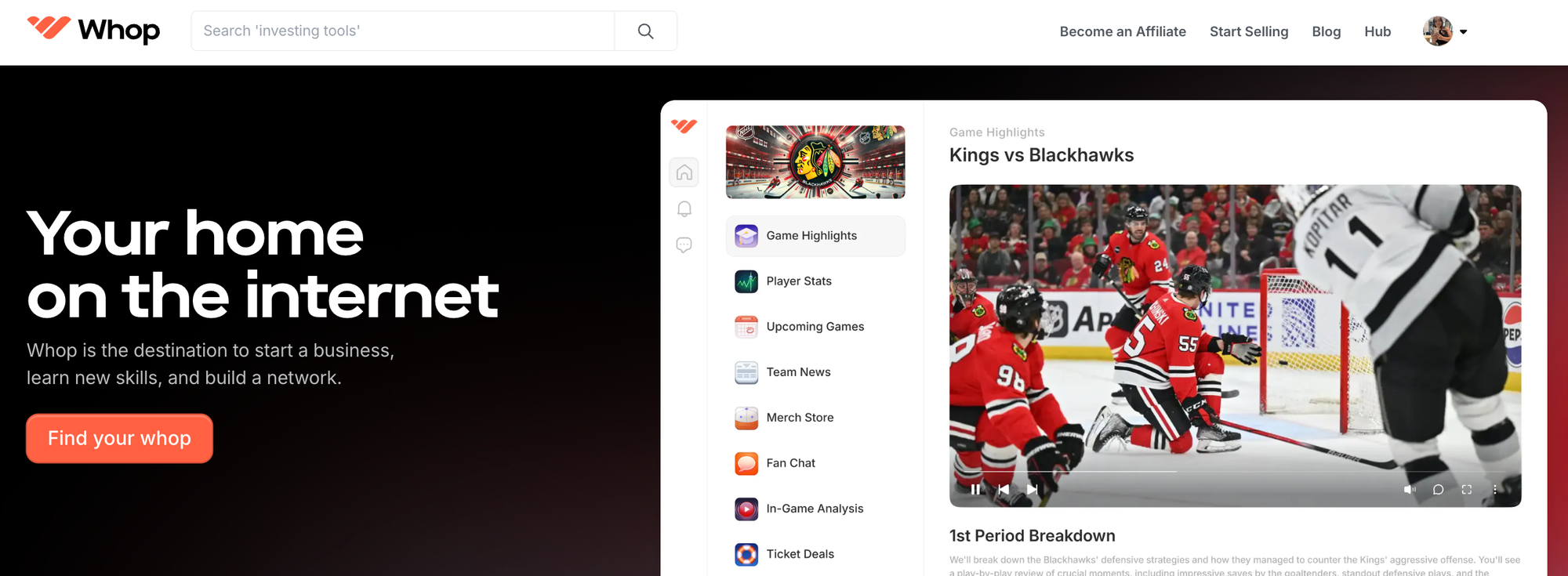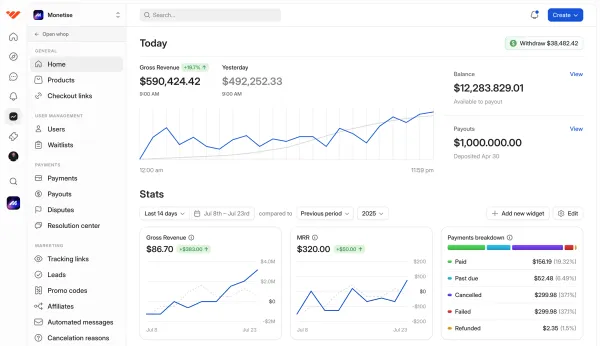Learn how to create a digital product strategy. Find out how to develop a roadmap to launch, market, and grow your brand.
Many brands underestimate the power of a digital product strategy. According to Harvard Business Review, 85% of leadership teams spend less than an hour each month on strategy, and 50% don’t spend any time at all?
For most brands, this is a recipe for disaster. In a 2022 survey of failed startups, some of the top reasons for business failure included running out of money, bad timing, limited marketing, and lack of a business model. The truth is that these reasons all stem from poor planning.
For digital businesses, skipping the planning phase is a colossal (and costly!) mistake. This year alone, global spending on digital goods is expected to soar to $135 billion.
Here we guide you through the essential steps to crafting a winning digital product strategy, from creation to marketing and beyond. Are you ready to transform your brand’s future? Let’s get started.
What is a Digital Product?
As the name suggests, digital products exist in a digital format, rather than as a physical object. Well-known digital products include ebooks, audio downloads, software, video games, e-learning courses, PDFs, and more. These products are typically accessed online, in-app, or downloaded to digital devices.
For example, as part of their monthly “Peachy Gold” subscription, The Peachy Investor offers several online trading courses, along with access to an exclusive Discord community.

One major benefit of digital products (vs physical products) is that there is no physical production or shipping process required. Digital products are infinitely re-sellable. No need to replenish your stock, or pay for hefty shipping costs.
That doesn’t mean you won’t need to make plans, though. Before you start selling, it’s essential to create a digital product strategy first. This helps you to see if there is a market for your products, plan your marketing, and much more.
- Not sure what to sell? Discover the best digital products to sell online
- Check out the best digital product niches
How do you Create a Digital Product Strategy?
Between 60 to 90% of all business strategies fail before their launch. In other words, it’s not enough to have a strategy. You need the right strategy.
Digital product strategies help you to create a data-led plan for your digital product. This should cover each stage of its life cycle, including:
- Creation
- Sales
- Marketing
- Scaling
The strategy can hone in on one product, but can also apply to your entire catalog. It should take into account your business goals, ideal customers, and market trends, so you can plan what you want to achieve – and create attainable goals.
Digital product strategies are not just about planning. They’re also about understanding. Your strategy should generate insights into your product’s unique selling points, competitors, customer needs, and broader market issues.
Strategizing takes your business out of the dark. With a clear strategy, you can make data-led decisions that lead your brand toward specific goals.
If you want to drill deeper into your strategy, you can choose a specific digital product strategy framework. For example, you might choose the design thinking framework, which focuses on user experience and problem-solving. You can learn more about design thinking in this video from CareerFoundry.
So, what are the steps to creating a digital product strategy?
1. Creating your digital product
To start a digital product strategy, you first need to plan for its creation, including production tools and methods. You’ll also need to determine the demand, competition, USPs, and more.
Define your product
Before you start on your strategy, you need to know what you’re selling. What is the purpose of your digital product? What is its format? Will it be a PDF guide or a downloadable audio file?
Be prepared for your product to change as your strategy develops. You may initially think your product should be an ebook, then later find it would be better to sell it as an online course.
You’ll also need to think about the creation process, including the budget for any tools. For example, if you want to sell an online course, you’ll typically need to use a course creation platform. Some marketplaces, like Whop, also feature built-in course creation tools, so you can create and sell in the same place.
Pinpoint your target market
Who is your product aimed at? To decide on the target market, you can use several different methods:
Competitors: Look at what your competitors are offering. Who do they target their products towards? What keywords do they use? Who is their messaging aimed at?
For example, say you wanted to sell a digital template for a planner. Who should your target market be? A quick search for “Notion templates” on Etsy brings up planners aimed at freelance business owners, as well as people with ADHD. This is likely because these groups both need to organize their time carefully.

You could target these groups, or think of other groups who may require similar organizational products, such as single parents.
Social listening: One of the best ways to find your audience is to listen. Scroll through X, Reddit, TikTok, and other social media platforms. Listen to what people in your niche are saying about the products you’d like to sell. You can quickly find out who’s interested.
Analytics: If you’ve already set up your business or have a social following, don’t ignore the data you already have.
What types of people have bought your products before? Who engages the most with your social media accounts? Leverage the data in your analytics tools, such as Facebook analytics.
Conduct competitor analysis
Use market research to explore the net value, marketing, products, and customer feedback of 5+ competitors. Examine their websites, product pages, blogs, and social media content.
Take into account their:
- Product pricing (including pricing structure)
- Market share
- Profit margins
- Product strengths and weaknesses
- Marketing
Analyzing your competitors will help you to pinpoint how your product stands out – and what strategies work in your niche.
Discover customer pain points and product USPs
This initial stage of your digital product strategy is about discovering what makes your product(s) stand out from the competition.
Pain points refer to the challenges that your potential customers experience. Your product should offer clear solutions to these issues. For example, customers might find the current offerings in your niche too expensive, with limited flexibility.
As a solution, you could offer multiple payment tiers to suit different customers.
You should also determine your product’s unique selling points (USPs). As it sounds, this refers to what makes your product unique.
For example, The Peachy Investor stands out by offering courses that “allow you to truly be independent instead of blindly following Trade Alerts”. Their material avoids the “overcomplicated strategies” in favor of the “simple basics”.

2. Build a roadmap to sell your digital products
Once you’re clear on the product, you can develop a roadmap. These are visual outlines of your strategy, including timings and goals.
Decide on goals
Develop achievable goals to add to your roadmap. What do you want to achieve in terms of sales, marketing, and more?
Consider how you’ll measure these goals. Key performance indicators (KPIs) are specific, actionable, and easy to measure. These include the conversion rate and net profit margin.
Setting SMART goals helps you to find attainable goals. You can learn more about these goals in this video from DecisionSkills:
Choose a platform
When your product is complete, you’ll need to think about where you want to sell it. You could create your own website with Shopify, though you’ll need to use an add-on for digital products.
Alternatively, there are online marketplaces, like Etsy, which allow you to sell digital goods. However, again, they’re often focused more on physical products.
There is one that stands above the rest - Whop is the leading platform specifically for digital product creators.

Develop a digital product strategy roadmap
Tying your strategy to a roadmap gives you a clear visual of your progress. Roadmaps contain several key features, including:
- Timeframe: This is the timeline that showcases when you’ll need to complete certain tasks. You can measure from month to month or by quarters.
- Key events: On the timeline, you can record key events for your product. For example, your product launch date, webinar dates, marketing events, etc.
- Goals: As discussed above, these are the attainable SMART goals you want to achieve for your business. For a product launch, this could include “sell first 1000 products” or “get 250 shares on social media”.
- Tasks: These are specific tasks for working towards your goals, including “add 10 products to my Whop store” and “share product pages to 3 social media platforms”.
- Progress: This is how much of the task you’ve completed. You could record this via a percentage, or give a more general status, such as “in progress”.
3. Marketing your digital product
Your roadmap should incorporate your marketing strategy. Here’s what you’ll need to keep in mind when creating a digital marketing strategy for a new product launch.
Identify marketing goals and tasks
To include your marketing strategy in your roadmap, set clear marketing goals and tasks. Aside from increasing sales, you might also aim to establish your brand’s reputation or gain new eyes on your products.
As with all other aspects of your roadmap, you should ensure you include measurable KPIs to keep track of your progress. With online marketing, click-through rate, conversion rate, and engagement are important metrics to track.
Find the right social media platform
Think carefully about which platform to promote on. If you already have a relevant following, you can share on these platforms. But you should also consider other platforms that are popular with your audience.
Check out which platforms your competitors use, and find out which are most popular with your target demographics. For example, TikTok users are predominantly under the age of 35.

You’ll also need to consider whether you want to leverage paid ads or focus on organic marketing. Establish a clear budget for any paid ads. Bear in mind that different platforms will charge different prices for their ads.
Decide on your brand message and aesthetic
As you develop your digital product strategy, you need to create a consistent brand identity. This should relate back to your customer pain points and product USPs. What makes your products stand out? Who are your products for? What are you trying to achieve with your products?
Maybe you want to help newbies in your niche become experts. Or perhaps you want to establish your expertise within the industry.
Your social media content and aesthetic should be influenced by your brand “message” – whether that’s productivity or entrepreneurship.
4. Growing your digital product brand
Once your product has launched, you’ll need to focus on overall digital product management. You can continue to refine your business and digital products, and find ways to scale your brand.
Review business analytics
As your products sell, you’ll have access to more data about your customers. Leveraging these insights will help you to see what’s working – and if there are any untapped growth opportunities to strike on.
Assess your business resources to determine if you can increase your marketing or production budgets.
Remember: there’s not just one way to grow your business. Some businesses focus on product-led growth, while others leverage a sales-led model, for example.
Analyze industry trends
Aside from your own business developments, trends in ecommerce and digital products will continue to shift and change. Keep updated with these developments to ensure you’re always ahead of your competitors.
For example, Search Engine Journal features up-to-date articles about the latest trends in SEO and social media marketing.

Set attainable scaling goals
As you scale your business, you can continue to develop your strategy roadmap, incorporating new SMART goals. Even with a limited budget, it’s possible to scale with bootstrap marketing techniques.
Discover Whop – the Ecommerce Platform for Digital Creators

Choosing the right platform to use to sell your products is essential to a successful digital product strategy. Selling from the wrong platform can lead to:
- Frustrated customers who can’t access your content
- Little to no sales due to poor visibility
- Expensive fees that cut into your budget
Enter Whop! With everything from a course creator, to community-building abilities, video-call features and multiple payment options, Whop is designed specifically for digital product creators.
You’ll find it easy to sell digital products on Whop. No need to download add-ons or pay for expensive course creation tools. You design your whop hub, your way, and add the features that you need to create, manage, and grow your online business.
As long as it's digital, you can sell it with Whop.




![How to sell digital products without a website - ultimate guide [2026]](/blog/content/images/size/w1000/2024/02/How-to-Sell-Digital-Products.webp)



![Where to sell digital products [2026]](/blog/content/images/size/w1000/2023/11/Where-To-Sell-Digital-Products.webp)






